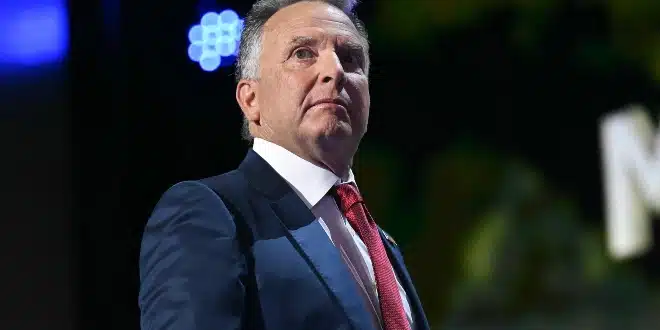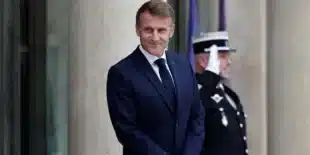In a renewed diplomatic effort to secure a ceasefire between Israel and Hamas, President Donald Trump’s special envoy, Steve Witkoff, is preparing to travel to the Middle East. The trip comes amid one of the deadliest periods of the ongoing conflict in Gaza and is part of a broader U.S. initiative aimed at halting hostilities and delivering urgent humanitarian relief.
U.S. State Department spokesperson Tammy Bruce confirmed Witkoff’s assignment on Tuesday, stating he was heading to the region “with a strong hope” that the United States could broker a new ceasefire agreement while also establishing an additional humanitarian corridor to ease aid delivery into Gaza.
While Bruce offered no concrete details about Witkoff’s itinerary or specific diplomatic objectives, she hinted that progress could be on the horizon. “I would suggest that we might have some good news,” she said, “but, again, as we know, this could be a constantly changing dynamic.”
Diplomatic Movements and Ceasefire Roadblocks
According to three U.S. officials, Witkoff is expected to stop in Europe this week for discussions that will include the situation in Gaza and efforts to de-escalate violence. However, they did not confirm any specific destinations in the Middle East or provide a timeline for those engagements. Due to the sensitivity of the negotiations, the officials spoke on the condition of anonymity.
Further signs of diplomatic engagement came from a source familiar with the negotiations, who revealed that Ron Dermer, a senior adviser to Israeli Prime Minister Benjamin Netanyahu, is scheduled to meet Witkoff in Rome on Thursday. The agenda will reportedly center on evaluating the current state of the ceasefire talks.
The Trump administration has faced repeated setbacks in its attempts to broker a lasting ceasefire. Despite several rounds of indirect negotiations held in Qatar, progress has been incremental at best. The central sticking point remains the future positioning of Israeli forces after any temporary truce — a detail that has proved pivotal in stalling formal agreement.
Humanitarian Crisis Drives Urgency
The need for a ceasefire has taken on increased urgency following a deadly incident over the weekend. On Sunday, at least 85 Palestinians were killed while trying to access food, marking the deadliest day for civilians seeking aid in the war-torn Gaza Strip in over 21 months of fighting.
The Israeli military claimed it had fired warning shots to control the crowd and disputed the reported death toll, calling it “greatly exaggerated.” However, the United Nations’ World Food Programme accused Israeli forces of directly targeting civilians who were attempting to access humanitarian supplies entering through the Zikim crossing.
Responding to the tragedy, Bruce called the scene “absolutely horrible” and said it underscored the urgency of establishing a reliable humanitarian route as part of any negotiated ceasefire. Aid agencies have repeatedly warned that the humanitarian situation in Gaza is deteriorating rapidly, with access to food, medicine, and clean water becoming increasingly limited.
Ceasefire Framework and Hostage Complications
The U.S.-backed proposal reportedly includes a 60-day ceasefire window. Under this plan, Hamas would begin releasing hostages in phases, while Israel would reciprocate by freeing Palestinian detainees and allowing a substantial increase in humanitarian aid deliveries to Gaza. The 60-day period would also serve as a platform for both sides to initiate talks toward a permanent resolution.
Yet deep divisions remain. Prime Minister Netanyahu has remained firm in his position, stating the military campaign will not end until Hamas is fully disarmed and relinquishes control over Gaza. On the other hand, Hamas has insisted that it will not release all hostages unless it receives guarantees that the war will not resume after the temporary truce.
This demand stems from a prior agreement earlier in the year that fell apart. In March, after an initial ceasefire ended, Netanyahu resumed military operations — a move that damaged trust between the parties. Hamas is now seeking international guarantees to avoid a repeat scenario.
As of now, Hamas is believed to be holding 50 hostages, with U.S. intelligence suggesting that around 20 of them are still alive. Their release is expected to be central to any final agreement.
Looking Ahead: Fragile Progress Amid High Stakes
While there are faint signs of forward movement, the road to peace remains complex and uncertain. The presence of Witkoff in the region signals a renewed American push to break the impasse. Still, with conditions in Gaza worsening and trust between the two sides severely strained, meaningful progress will require not only diplomatic agility but also concrete concessions from both Israel and Hamas.
Whether this latest round of talks can deliver a breakthrough remains to be seen — but for the civilians on the ground, especially in Gaza, the stakes could not be higher.


